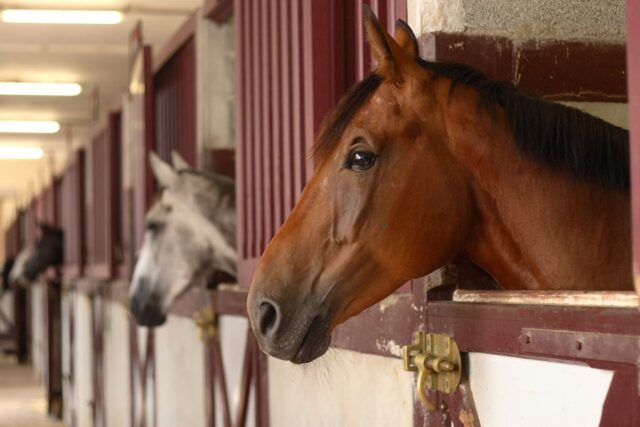
Horse stables are a topic that is frequently asked about. We compiled a list of significant facts regarding horse stables to provide answers to the most commonly asked queries. The main ideas you can utilize if you plan to construct a secure horse stable are listed below.
The following paragraphs will review some crucial ideas for stable horse planning.
1. Stable Position
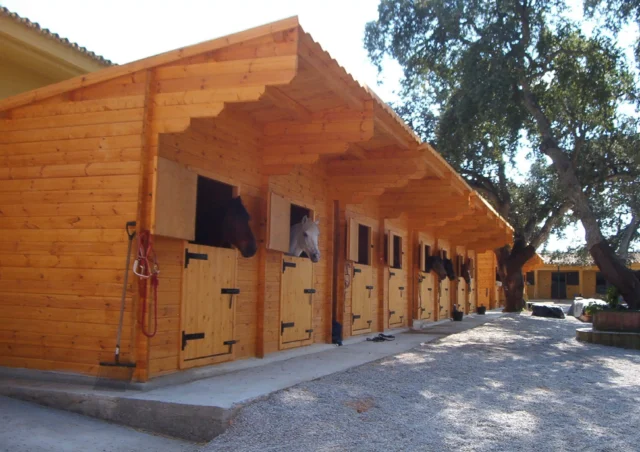
Do your homework on the land before you start looking for your stable. Knowing the wind direction is crucial for stables since the last thing you want is a sudden gust to lift your stable. If your location is on a hill, consider building your construction higher up to assist water flow away from it rather than flooding it.
Additionally, if you want to know more about care tips for your horse and horse gear, visit horsevills.com.
2. Types of horse stables
Standard stables, portable stalls, prefabricated stables, and custom stables are just a few examples of stables’ various sizes and designs. You might even convert an existing shed or barn to cut expenditures. How many horses you intend to introduce to your property will determine how many stalls you’ll need and the size of the stable overall. Ideal stable dimensions for one horse should be at least three by three meters.
You can first pick between box stalls and tie stalls while building stalls. Box stalls should have minimum dimensions of 3 meters by 3 meters to 3.6 meters by 3.6 meters for a riding horse of medium size. This is the minimum requirement; if practical, it is advised to construct a more oversized stall. The minimum dimensions for tie stalls are 1.5 meters wide by 2.4 meters long. The stall must be roomy enough for the horse to feel comfortable lying down.
3. Height of horse stables
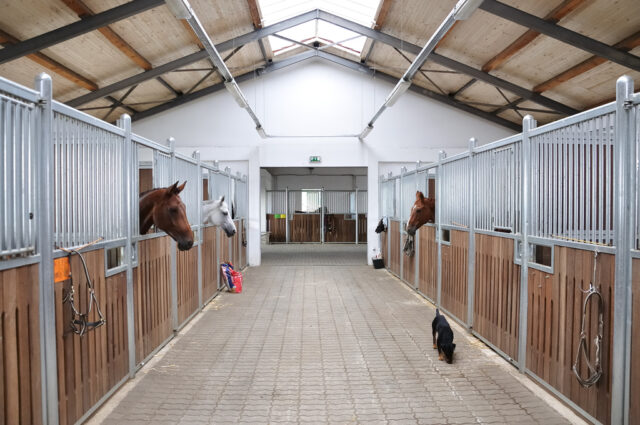
In addition, a horse stall should be made of sturdy wood with walls up to 1.4 meters high, considering the height of the stalls. To help with ventilation and light, it is advised to place a mesh on top of the wooden walls.
Moreover, windows offer natural ventilation and lighting. Use as many windows as you can in a reliable design. The windows must have a sturdy mesh to prevent the horses from shattering the glass. Swing-open windows are preferred to sliders since the latter may collect dirt and become difficult to operate.
4. Stable doors
As a general rule, doors should be 1.25m (4ft) wide or a size that is appropriate for the specific horse. Door grills can be used, and the height of the door should allow the horse or pony to see over it. Top and bottom bolts should be used to fasten the bottom door firmly.
A top door that can be locked while opening can also be in stables. You should know that closing the top door can reduce natural light and ventilation.
5. Flooring for stables
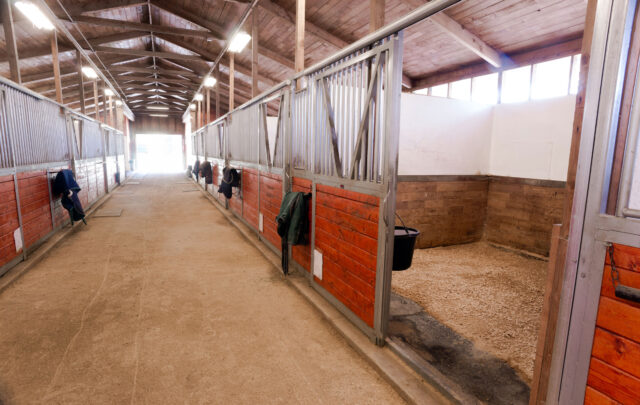
For stables, a variety of flooring options are available. In horse stables, concrete is the most often utilized flooring material. Since flooring made of concrete or stone does not naturally drain, you need either install drains in the stalls or, at the very least, keep the stalls clean to prevent ammonia buildup.
Although concrete and other hard surfaces are simpler to keep clean, many use rubber-like flooring to give their horses more comfort. Just leaving the earth floor alone is the simplest option. It can be warmer and quieter, but keeping clean is more work.
6. Lighting
The type of lighting in your stable can significantly impact how well your horse feels. If you intend to breed your horse, consider using natural light, as it affects hormone levels, fertility, and melatonin production and promotes restful sleep in horses. When left alone in a dark, dismal stable, horses frequently start to weave, crib or wind suck out of boredom.
Horses also need visual contact when in a stable with other animals. According to certain studies, stables must be lit at least 150 to 200 lux for 15 hours daily. Keep all lighting out of their reach to protect your horse. Do not hang lights too low.
7. Bedding for horses
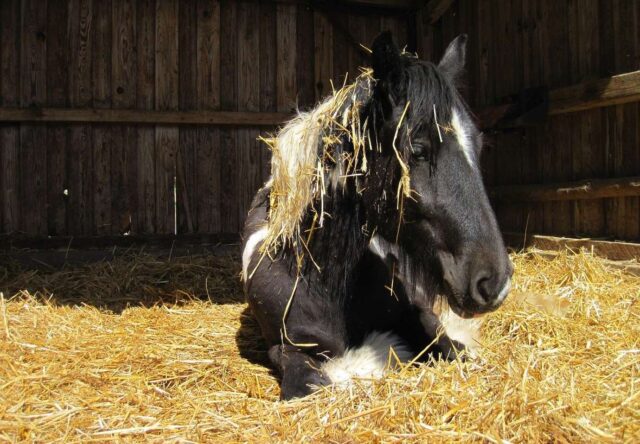
All equine accommodations must have adequate and appropriate bedding to keep horses warm, prevent injuries, and allow them to rest comfortably. Whatever type of bedding is used, such as straw, shavings, stable rubber mats, etc., needs to be adequately maintained and replaced or cleaned regularly.
8. Ventilation
Proper ventilation is essential to keep the air in a horse stable, clean and free of dangerous gases and other pollutants. Choose a stable with many windows, doors, and other openings so air can move freely.
9. Safety and comfort
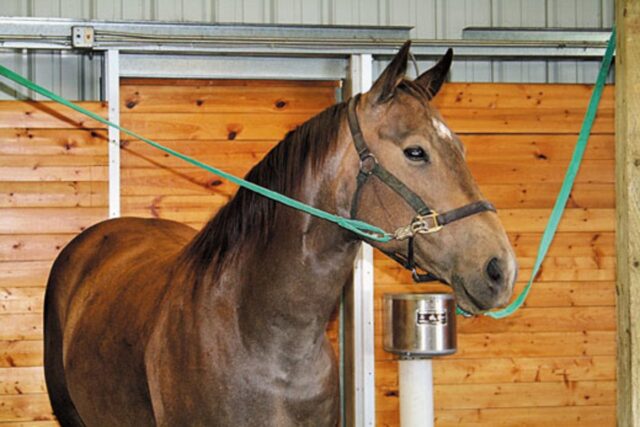
Safety should be considered when designing a horse barn. Choose a solid and well-built stable, and routinely inspect it for potential dangers that could endanger your horses.
Horses require a suitable setting to maintain their well-being. Ensure they have access to clean enough, fresh water, hay, and other necessities and that their bedding is cozy and clean.
10. Storage and drainage
You should have enough space in your stable to store tools, hay, feed, and bedding. Otherwise, carrying things around the yard will eventually wear you out. Ensure your stable has proper drainage so liquid waste can be removed and out of the way. This will keep the stable cleaner and fresher.
Bottomline
Lastly, securing the lighting and wiring in horse stables for the animals is essential. There should be as little darkness as possible when placing lighting. Switches and light bulbs should be removed from the horses’ reach, and the bulbs should be enclosed in safety cages. All plug-ins should be rodent and moisture-resistant.
Alright, now you know all about stables. The next thing you need is some gear for your horse. You can buy many things and spend extra expenses without realizing it. So to avoid that, check out our list of 14 Things Horse Owners Should Know About What Their Horse Need before you leave. Good luck.









